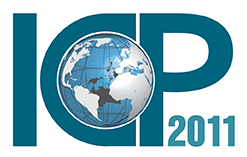 The big splash from the April 2014 summary release provided users with a glimpse of the International Comparison Program's (ICP) 2011 results and findings, as revealed in Haishan Fu's blog post and related press release. Users can now explore the full set of the 2011 ICP results released in June 2014.
The big splash from the April 2014 summary release provided users with a glimpse of the International Comparison Program's (ICP) 2011 results and findings, as revealed in Haishan Fu's blog post and related press release. Users can now explore the full set of the 2011 ICP results released in June 2014.
These results provide data on purchasing power parities (PPPs) of currencies, expenditure shares of gross domestic product (GDP), total and per capita expenditures in United States dollars (USD) both in exchange rate terms and PPP terms, and price level indices. This dataset covers 26 expenditures categories for goods and services for 199 participating economies from Africa, Asia and the Pacific, the Caribbean, the Commonwealth of Independent States, Latin America, Eurostat-OECD, Western Asia, singleton economies, and the Pacific Islands. Also included are estimated results for non-participating economies.
Figure 1 below presents a multidimensional comparison of per capita GDP - scaled to the relative size of each economy - against its price level index (PLI) with the world equal to 100. The PLI, the ratio of a PPP to a corresponding exchange rate, is used to compare price levels between economies.
Once again, users may download the full set of the 2011 ICP results in Excel. Additionally, researchers may request access to unpublished detailed data and metadata from the 2011 ICP round by submitting an application to the Development Data Group, in accordance with the 2011 ICP Data Access and Archiving Policy.
The ICP is the largest worldwide statistical partnership involving 199 economies. The program produces internationally comparable price and volume measures of GDP and its component expenditures. The measures are based on PPPs. To calculate the PPPs, the ICP holds surveys to collect price and expenditure data for the whole range of final goods and services that comprise the GDP including consumer goods and services, government services, and capital goods. Using PPPs instead of market exchange rates to convert currencies makes it possible to compare the output of economies and the welfare of their inhabitants in real terms (that is, accounting for differences in price levels).
For more information, visit icp.worldbank.org or e-mail us at icp@worldbank.org.



Join the Conversation